Planned $89 million renovation 'a complete reimagination' of IMS Museum experience
For the first time in four decades, the Indianapolis Motor Speedway Museum, the home of the Racing Capital of the World’s 114 years of history, will close its doors for nearly 18 months as it undergoes an $89 million transformational renovation.
When it reopens in April 2025, weeks ahead of the 109th running of the Indianapolis 500, visitors will be greeted with a brand-new elevated mezzanine space overlooking its gallery of winning cars, featuring 6,700 new square feet of exhibition space, experience a brand-new STEAM learning center featuring a racing simulator and tools equipped to put fans through a pitstop competition and an immersive exhibit that will leave guests with the thrill of cars zooming past at 240 mph and the smell of exhaust and burnt rubber in their nostrils.
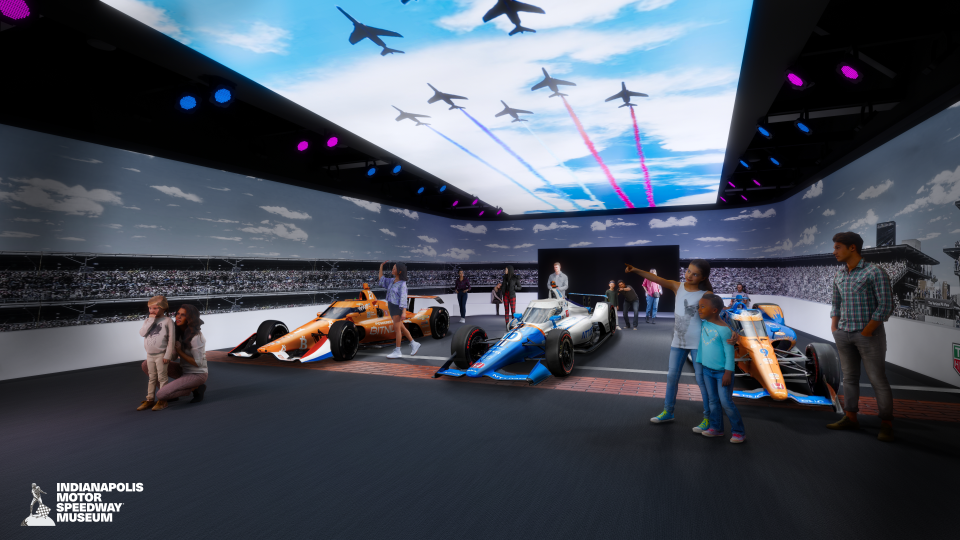
“Everyone has a story around the 500, and what are we but a receptacle to tell those stories?” Joe Hale, president of IMS Museum told IndyStar. “There’s going to be a lot more storytelling going on in this reimagined museum and a lot more learning opportunities than the past and more entertaining too.
“Right now, you walk in, and there’s not too many surprises. You can kinda see the whole museum. (After these renovations), there’s going to be a storyline or path to follow that’s going to explain and educate people on why (the 500) is important for Indianapolis and what it’s done for the racing industry itself.”
A project with generational impact
As of Tuesday morning’s public announcement of the fundraising campaign — titled ‘The Stories Behind the Spectacle’ — the museum has raised just over $46 million of its $89 million goal. Of that, $10 million has come from Mary and Randy Rogers, along with $5 million from the Dyson Foundation.
In its release, the museum also thanked well-known racing industry heroes including Sandi and Scott Borchetta, the Bobby Rahal family, and Linda and Mike Curb for “transformative gifts that support the museum’s goals of a transformed learning space."
In addition, the museum has received a $20 million grant from Lilly Endowment to fund the educational initiatives around the STEAM (science, technology, engineering, art and math) classroom the museum will use for both scheduled educational programs as well as everyday learning experiences.
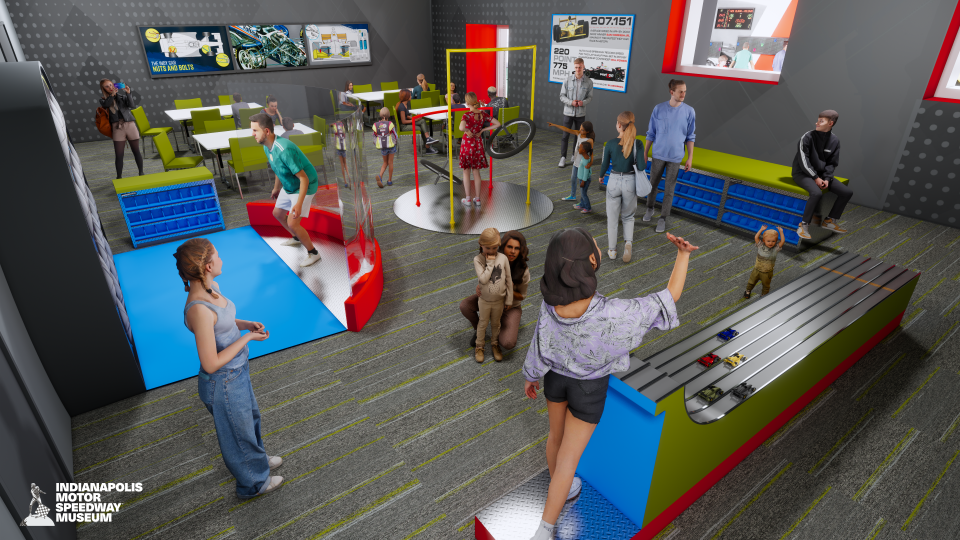
Overall, $64 million of the fundraising goal is scheduled to go toward the “complete transformation” of the interior of the building, though its footprint just inside Gate 2 of IMS won’t change. A future phase of the project will include an offsite restoration facility that far exceeds the current pair of 1,500 square-foot buildings just outside the 2.5-mile oval. In it, the new buildings at a location to be determined, will be nearly 150 vehicles in the museum’s collection not currently on display, along with six bays of workspace as well as an event-hosting space.
The museum will also earmark $10 million of the funds raised to go toward an endowment that will allow it to continue acquiring more IMS-related and racing artifacts to add to its collection of more than 55,000 cars, helmets, racing suits and pop culture trinkets that tell the story of a racing facility that has hosted IndyCar, NASCAR, Formula 1, IMSA and Moto GP, among other world-renowned racing series.
“I still foresee us relying on the generosity and donation of items from guests, race fans and collectors. This doesn’t give us a blank check to go purchase things,” said Jason Vansickle, the museum’s vice president of curatorial and education. “But we can look more at the diversity of our collection, whether it’s female participation or participants of color. Racing as a whole is trying to remedy its past, and having those examples of people from different backgrounds can help us tell that story.
“This is a complete reimagination of the experience here — not only with the guest experience, but also for the care of our collection to set it up for the future, whether that’s preservation, storage or displays at a nuanced level to make sure we’re lighting items properly and safely.”
And now, after the museum approached a select group of deep-pocketed members of the racing industry, everyday fans and longtime members of the museum will be able to contribute to the $43 million left to be raised before the facility reopens in just under two years.
“This is a really unique opportunity to create something we know is going to be around for generations to come,” Hale said. “We’ve worked with some really great people around the country putting this plan together, and its been tested in a lot of ways. We were really grateful for the initial response we received from a handful of donors. At the moment, 80% of the people who visit the museum are from outside Indiana, so we see this as a wonderful opportunity to expand our marketing to get an even larger local audience that can also be an economic driver for the state.”
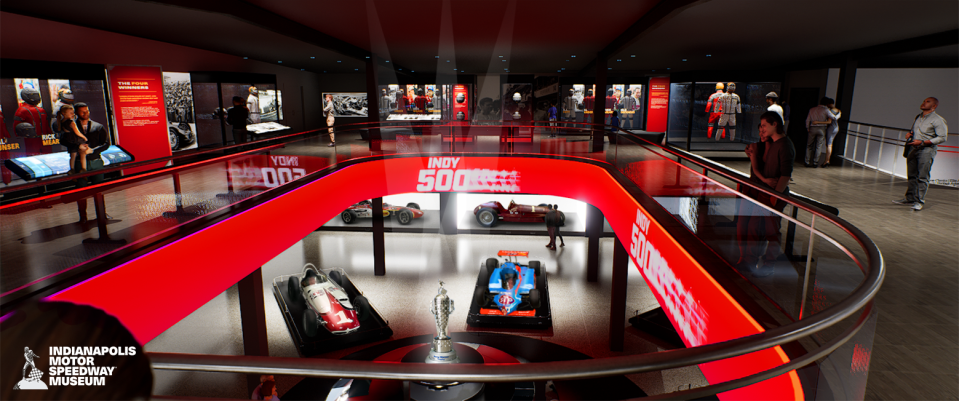
The IMS Museum's reimagined space
The museum’s re-envisioned space will include seven permanent exhibitions, starting with one focused on Gasoline Alley that will feature various garage setups dating back to the track’s first 500 in 1911 with artifacts from the museum’s collection that can rotate through the exhibits over time to keep it feeling fresh. The ‘Starting Line Experience’, Vansickle said, will give the everyday race fan the opportunity to get a sense of the sights and sounds of what it’s like to be one of a very select crowd that gets to take in the closing moments before drivers hop in their cars while standing on the front stretch at IMS while ‘Taps’ plays and fighter jets fly overhead.
Much of the facility’s expansive winning-cars collection will be laid out in two separate zones, including the ‘Winners Gallery’ visitors will see from up above when they walk in on the mezzanine level and look down upon a lit-up Borg-Warner Trophy surrounded by cars spanning more than a century of racing at IMS. The mezzanine itself, Vansickle said, will likely be used to display parts of the museum’s collection that expands beyond the 500, featuring other racing series’ artifacts to fully tell the track’s history in the motorsports landscape.
For the first time, the museum’s basement — which used to be closed off to the public entirely for restoration and only recently was opened for a high-price ticket that included a 30-minute guided tour — will now be open to the public, featuring a more well-rounded car gallery from the museum’s collection sitting on a banked track-like platform. The basement will also feature two rotation galleries, as well as a ‘milk bar’ to tie in one of the 500’s most-storied traditions. The north end of the museum will feature a gallery space dedicated to Roger Penske and Team Penske's historic levels of success at IMS, including their record 19 Indy 500 victories that Josef Newgarden added to this past May.
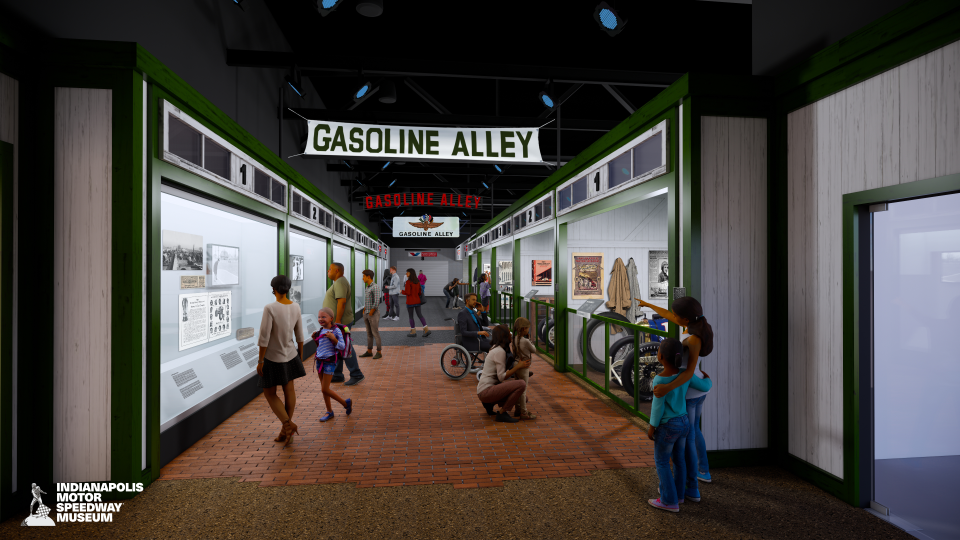
“We’re open 363 days a year, and for roughly 340 of those, there’s nothing else happening (at IMS) but us, and we’re charged with telling that story, what’s happened and what’s being developed here,” Hale said. “We take that very seriously, and with these renovations, we feel we can tell those in a much more imaginative way.
“We’re trying to look at what folks (at other museums) are doing right now, what technologies are being used and how people are experiencing museums today and the learning that’s going on there.”
Perhaps the most key component of that vision will be the museum’s STEAM classroom that will give it a bit of a Children’s Museum feeling with hands-on learning opportunities for kids and teenagers of all ages. In the coming year, Hale will spearhead hiring a new director of education who will work with Vansickle to flesh out the space’s scheduled curriculum of talks, classes and seminars that will be augmented by lessons and experiences that can be enjoyed by visitors around the clock.
“There’s so many new lucrative, well-paying jobs being created (locally) by Ganassi, McLaren, Andretti and Rahal in their shops here, and we want to focus on, 'What should you targeting to learn in middle school and high school? What classes should you be taking in order to prepare you for those jobs later on?’” Hale said.
Added Vansickle: “The racing industry is interesting, where you can watch it on TV or be at the track, but if you’re not the driver, you don’t get a sense of what they deal with. You can go out and throw a football or play a sport at a certain age and then watch it on TV and get that connection. This will be an area where younger and older guests alike, with the racing simulator and reaction challenge, can get that connection that can draw them into other portions of the museum.”
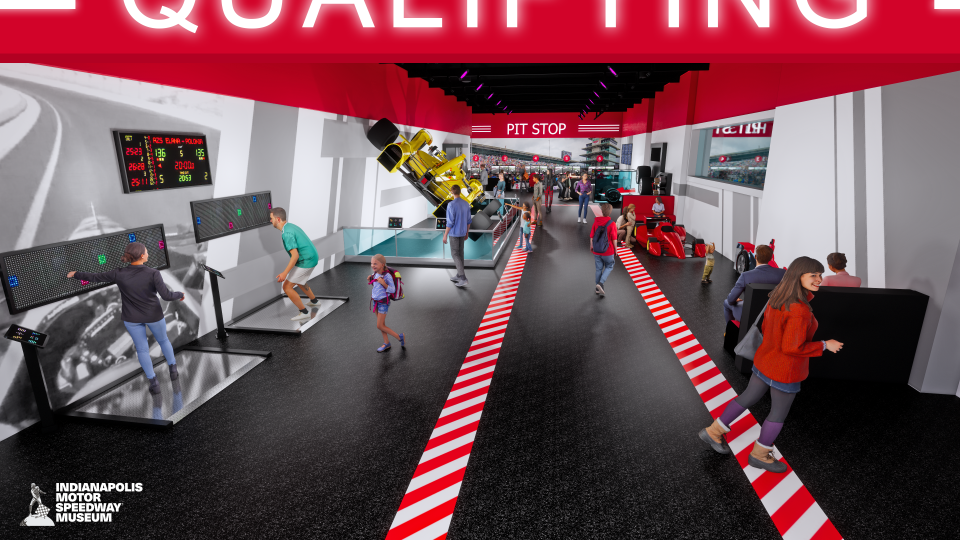
Closure schedule
The closing of the museum will begin with an initial month-long phase starting in October of this year, where the basement exhibit area will shutdown to the public. In November, the Museum will close its doors entirely and remain in a full-on renovation phase until April 2025. During that time, visitors will still be able to enjoy the tradition track tours.
This article originally appeared on Indianapolis Star: IMS Museum to undergo $89 million renovation before 2025 Indy 500
